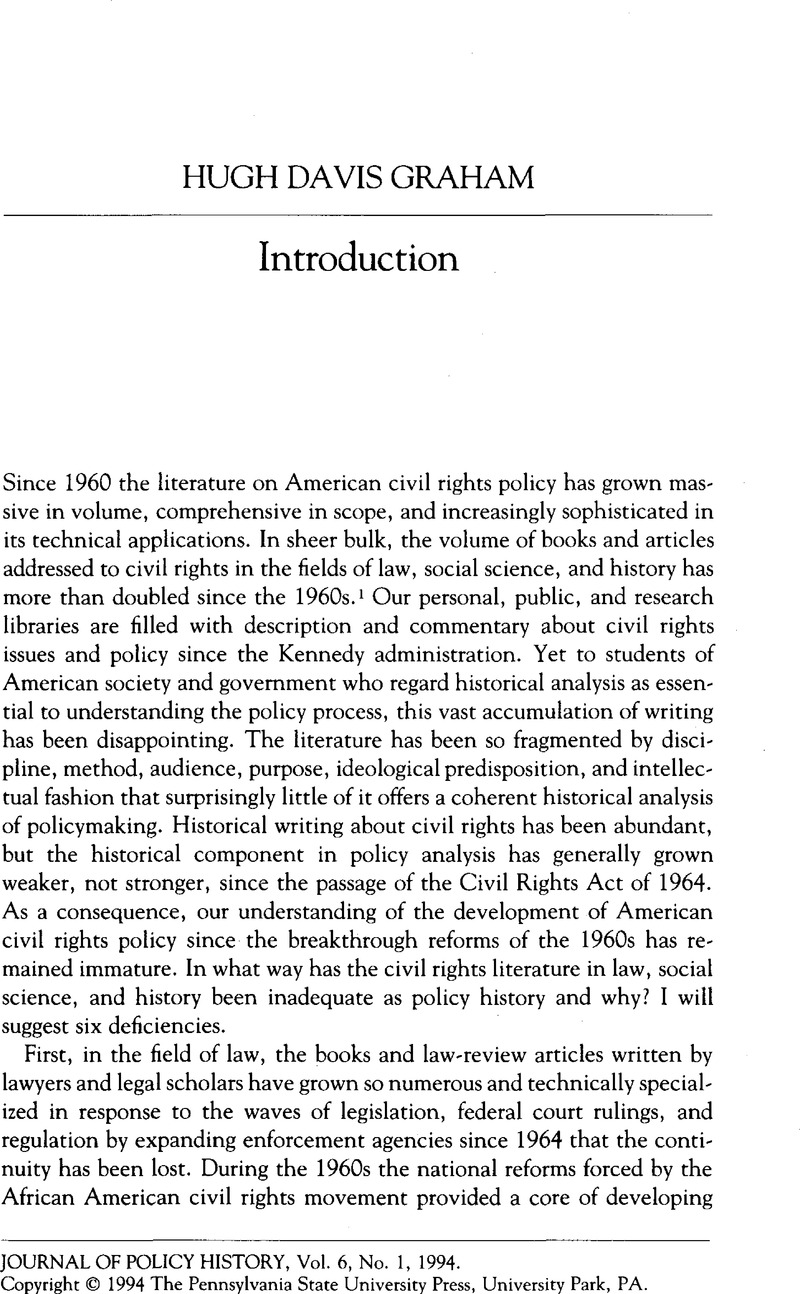No CrossRef data available.
Article contents
Abstract

- Type
- Introduction
- Information
- Copyright
- Copyright © The Pennsylvania State University, University Park, PA. 1994
References
Notes
1. According to Bowker's Books in Print, between 1968 and 1993 the number of books about civil rights in the United States increased by 107 percent, books specifically about African Americans and civil rights increased by 80 percent, and the number of books addressing the rights of women more than tripled.
2. For two recent examples of historically-minded legal scholarship, see Belz, Herman, Equality Transformed (New York, 1990)Google Scholar; and Blumrosen, Alfred W., Modern Law: The Law Transmission System and Equal Employment Opportunity (Madison, Wis., 1993)Google Scholar. The historical shift to affirmative-action policy is criticized by Belz, a legal historian, and is supported by Blumrosen, a law professor.
3. Wilson, William Julius, The Truly Disadvantaged: The Inner City, the Underclass, and Public Policy (Chicago, 1987)Google Scholar; Donohue, John J. III and Heckman, Joseph, “Continuous Versus Episodic Change: The Impact of Civil Rights Policy on the Economic Status of Blacks,” Journal of Economic Literature 29 (December 1991): 1603–43.Google Scholar
4. March, James G. and Olsen, Johan P., “The New Institutionalism: Organizational Factors in Political Life,” American Political Science Review 78 (1984): 734–49CrossRefGoogle Scholar; Robertson, David Brian, “The Return to History and the New Institutionalism in American Political Science,” Social Science History 17 (Spring 1993): 1–36.CrossRefGoogle Scholar
5. deLeon, Peter, Advice and Consent: The Development of the Policy Sciences (New York, 1988).Google Scholar
6. Graham, Hugh Davis, “The Stunted Career of Policy History: A Critique and an Agenda,” Public Historian 15 (Spring 1993): 5–26.CrossRefGoogle Scholar
7. Carmines, Edward G. and Stimson, James A., Issue Evolution: Race and the Transformation of American Politics (Princeton, 1989)Google Scholar; Edsall, Thomas with Edsall, Mary D., Chain Reaction: The Impact of Race, Rights, and Taxes on American Politics (New York, 1992)Google Scholar. See also the special issue on affirmative action, edited by Orlans, Harold and O'Neill, June, of The Annals of the American Academy of Political and Social Science 523 (September 1993).Google Scholar
8. See Stein, Coleman Brez Jr., Sink or Swim: The Politics of Bilingual Education (New York, 1986)Google Scholar; Hakuta, Kenji, Mirror of Language: The Debate on Bilingualism (New York, 1987)Google Scholar; Porter, Rosalie Pedalino, Forked Tongue: The Politics of Bilingual Education (New York, 1990)Google Scholar; Imhoff, Gary, ed., Learning in Two Languages: From Conflict to Consensus in the Reorganization of Schools (New Brunswick, N.J., 1990).Google Scholar
9. See Burns, Stewart, Social Movements of the 1960s: Searching for Democracy (Boston, Twayne, 1990)Google Scholar; Chalmers, David, And the Crooked Places Made Straight: The Struggle for Social Change (Baltimore, 1991).Google Scholar




